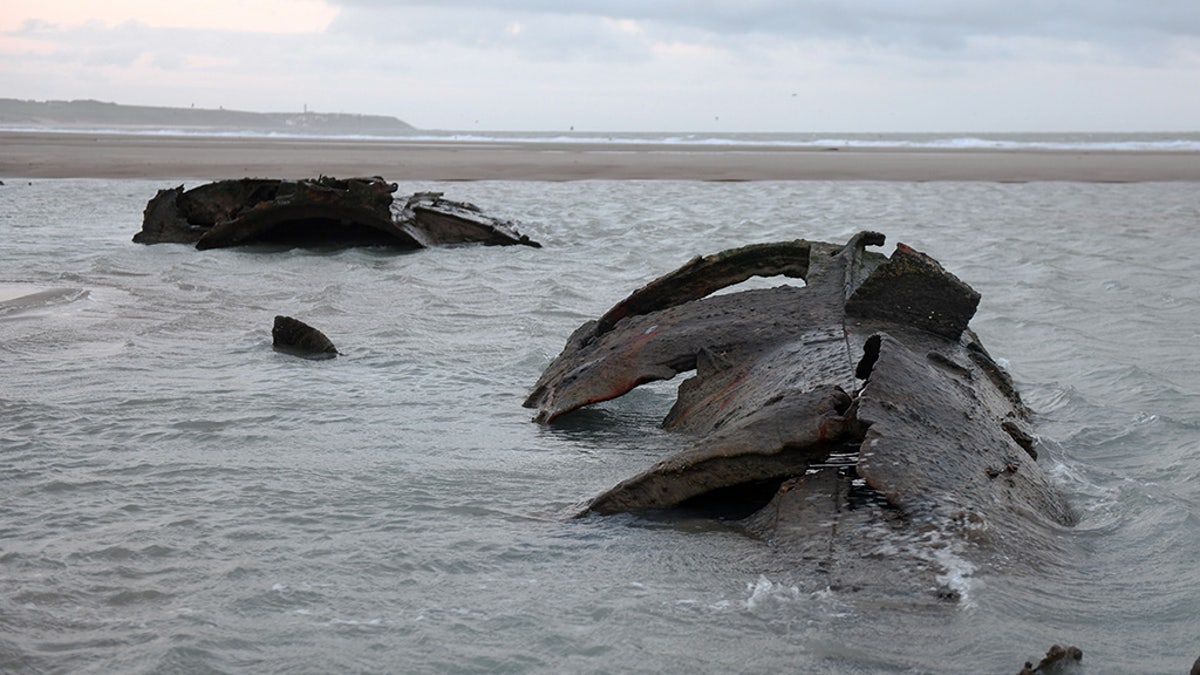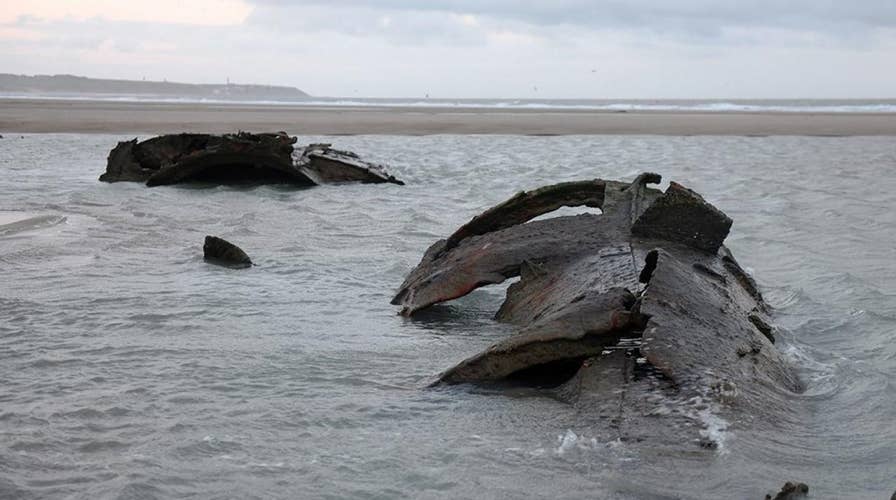World War I German submarine discovered in Northern France
A World War I German UC-16 submarine was unearthed in Northern France.
More than a century after it sunk into the sands of a Northern France beach, a German submarine from World War I has been unearthed.
The UC-16 ran aground on the shores of Wissant, France in July 1917 due to heavy fog, and was flooded by the crew so it couldn't be used by Allied forces. Over time, wind and sand thoroughly buried the abandoned vessel beneath the ocean water. Now, two large portions of the rusted structure have become visible to residents and tourists just 330 feet from the shore, and has become somewhat of a local attraction.
Little is known about the century-old German submarine, except for some elements of its battle history, and what became of its crewmembers. The UC-16 was responsible for sinking 11 ships during WWI, primarily from France and the United Kingdom. On its last voyage, it traveled from the village of Zeebruges, Belguim and was headed towards the ports of Boulogne-sur-Mer and La Havre in France to lay mines.
WORLD WAR 1: 100 YEARS ON, THE US REMEMBERS THE END OF THE 'GREAT WAR'

The German UC-16 ran ashore in 1917, and was flooded by the crew so it couldn't be used by Allied forces before they surrendered to the French (AFP/Getty)
However, the UC-16 didn't make it far, running ashore just north of Boulogne-sur-Mer in Wissant. When the crew realized the ship was unsalvageable, they quickly flooded it and surrendered to French authorities.
Opinions about what will become of the wreckage differ among Wissant locals. Bernard Bracq, the Mayro of Wissant, believes that this resurgence of the UC-16 won't last long.
"The wreck is visible briefly every two to three years, depending on the tides and the wind that leads to sand movements, but a good gust of wind and the wreck will disappear again," he told BBC.
WORLD LEADERS GATHER IN PARIS A CENTURY AFTER WW1 ARMISTICE
Other historians and locals disagree. Wissant tour guide Vincent Schmitt argues that forthcoming tides and wind might expose the submarine even more. He spoke on the excitement surrounding the emergence of the UC-16, and what we could stand to learn from seeing more detail of the historic vessel.
"All the residents of Wissant knew there was a submarine here, but the wreck is mostly silted and therefore invisible," he said.
CLICK HERE TO GET THE FOX NEWS APP
"Pieces reappear from time to time, but this is the first time we discover so much."

